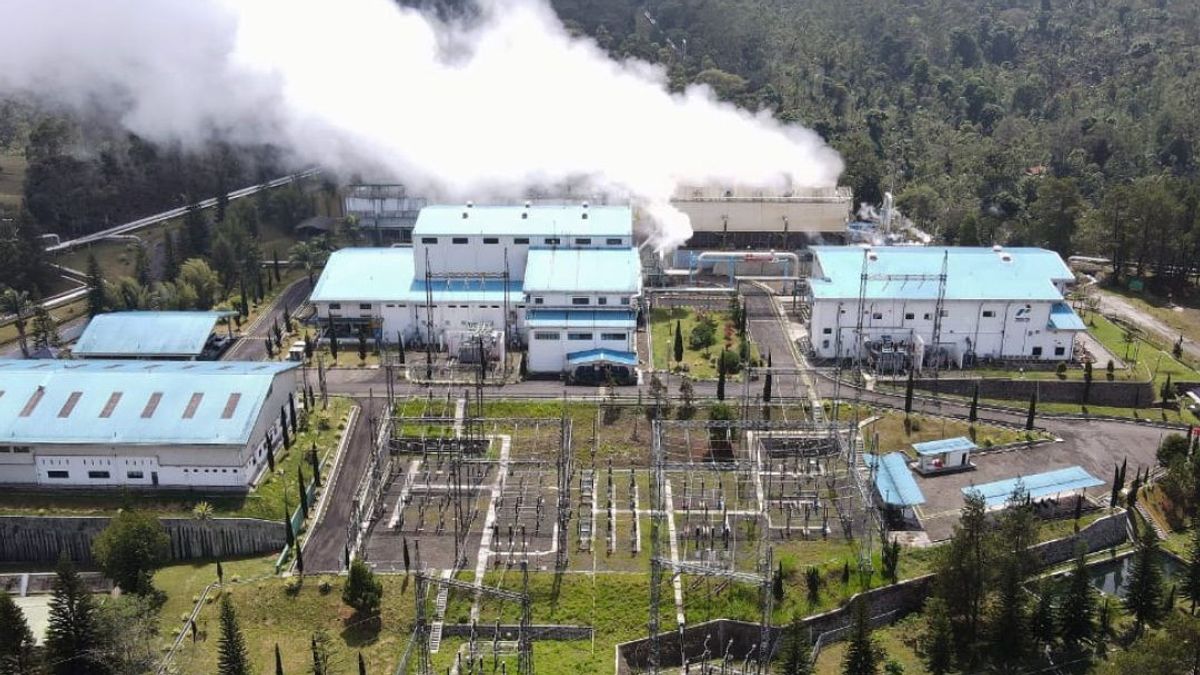JAKARTA - Indonesia is a country that has a very large potential for geothermal reserves or geothermal heat in the country.
In addition to geothermal heat, there are also other renewable energy that has been utilized, namely solar and hydro power, although it is still limited.
"In total, the total net energy potential that Indonesia has is 3,687 gigawatts (GW). However, what has just been utilized has only reached 12.6 GW or only 0.3 percent of the total potential", said Tommy Pratama, Executive Director of Energy Asia in a statement in Jakarta, quoted from Antara, Monday, January 15.
According to him, Indonesia, with the natural wealth of the existing forest, can be a pioneer in the energy transition to reduce greenhouse gas emissions. In addition to reducing dependence on dirty energy, it can also manage clean energy resources to maintain the lives of many people.
Tommy revealed, there are six renewable energies in Indonesia that can be optimized. First, geothermal or geothermal. Indonesia is the second country in terms of installed capacity for geothermal energy, after the United States.
As a power plant, the estimated resources and reserves are 28,000 megawatts (MW). The potential for the latest geothermal resources, according to a report by the Directorate General of New Renewable Energy and Energy Conservation (Ditjen EBTKE) is around 25,600 MW.
Second, solar energy. Indonesia is the country with the largest solar power absorption in ASEAN. The average radiation intensity of 4.8 kWh/m2/day is equivalent to 112,000 GWp (10 times the German potential).
The provinces of West Nusa Tenggara and Papua have the highest solar energy potential of 5.7 kWh/m2/day, and Bogor in West Java is the lowest of 2.56 kWh/m2/day. PLTS is very suitable to be an electricity source for rural areas that only has 1 MW PLTS with a land requirement of 1-2 hectares.
Third, hydro energy. As a power plant, hydro energy or water pressure, it has greater potential than geothermal energy. It is estimated that it reaches around 75,000 MW. Currently, hydro energy is the most widely utilized renewable energy source in Indonesia, with a total installed capacity of around 6,000 MW.
Fourth, sea waves. The potential for wave energy generation in Indonesian waters is quite large. The average wave height ranges from 2-2.5 meters in the South of the Java Sea and 4-5 meters off the west coast of Sumatra in the Indian Ocean.
Experiments using a Wave Power Plant - The horizontal Bandulant System (PLTGL-SB) by Zamrisyaf (the owner of Patent No. HAKI P002000854) was able to generate electricity of 3 kW for lighting for 20 houses.
Fifth, tidal sea flow plus ocean currents. Storage of the ups and downs of hydrokinetic energy, and by using the pendulum (PLTGL-SB) system can be converted vertically into electric power. This depends on fluid density, flow cross-section, and flow speed.
SEE ALSO:
The marine-based private power plant project, called Tidal Bridge Indonesia will be the first PLTGL project in Indonesia and the largest in the world, with the potential to produce 20 MW.
Lastly, sea heat. Indonesia has the largest potential in the world, utilizing marine energy from Ocean Thermal Energy Conversion (OTEC). The research was carried out in 17 locations across from Indonesia.
Starting from the west coast of Sumatra, south of Java, Sulawesi, North Maluku, Bali and Central Nusa Tenggara (NTT). It is estimated that the potential energy is around 41 GW. In addition to producing electricity, the OTEC process also produces pure water due to evaporation of sea water.
The English, Chinese, Japanese, Arabic, and French versions are automatically generated by the AI. So there may still be inaccuracies in translating, please always see Indonesian as our main language. (system supported by DigitalSiber.id)















